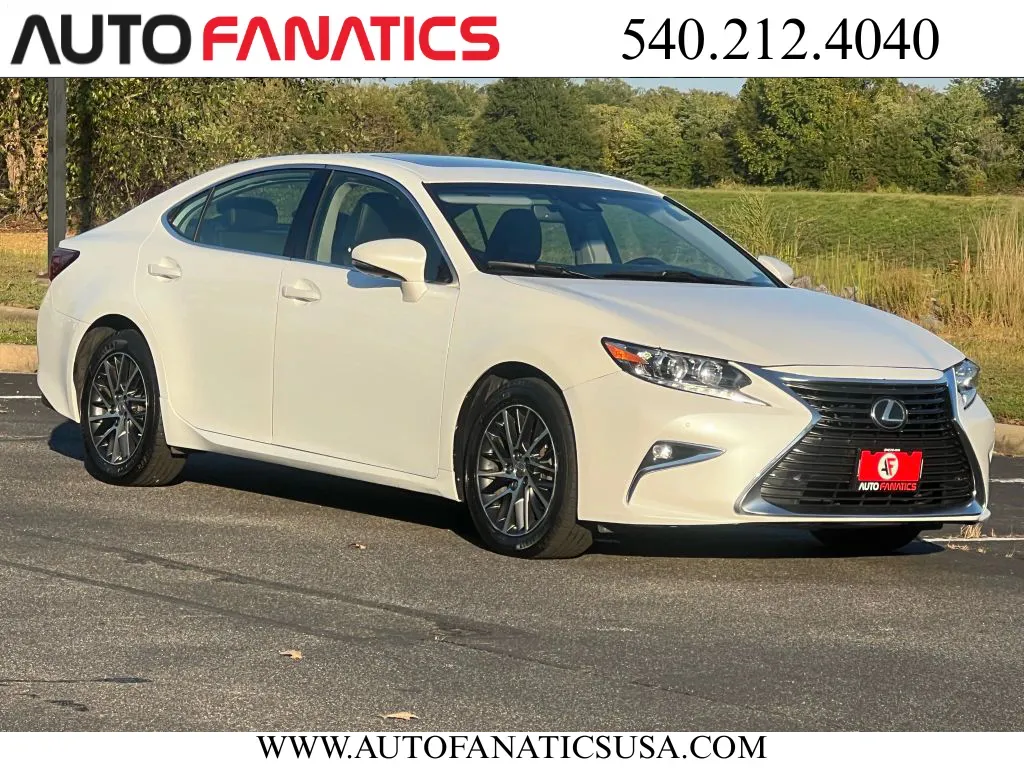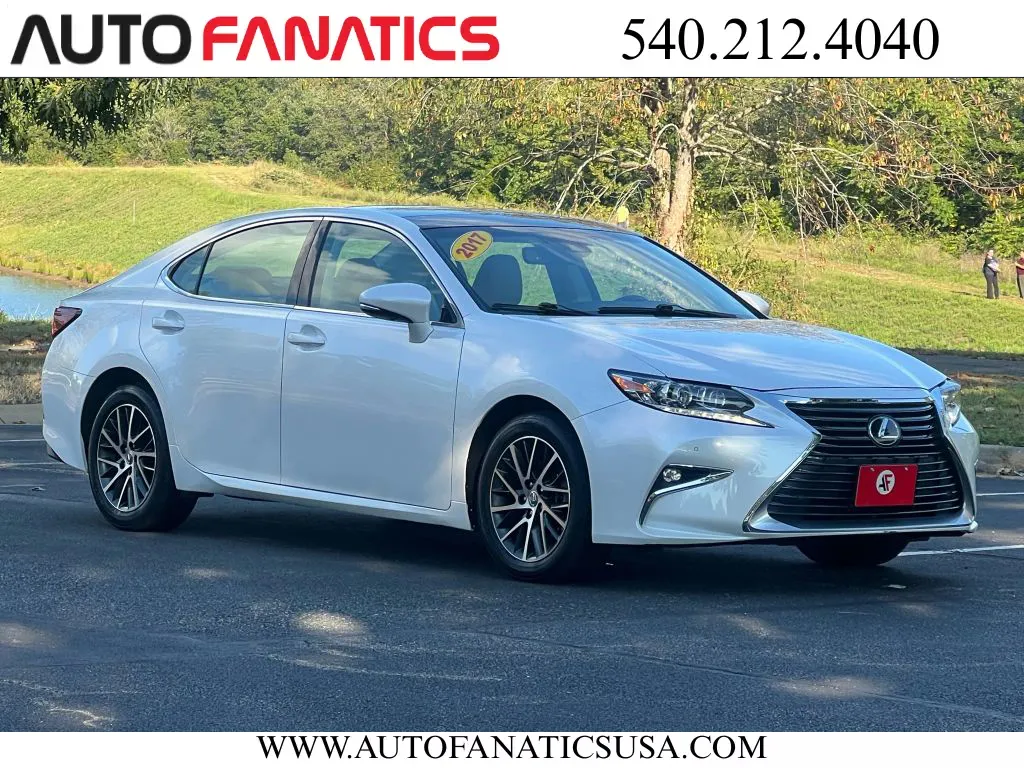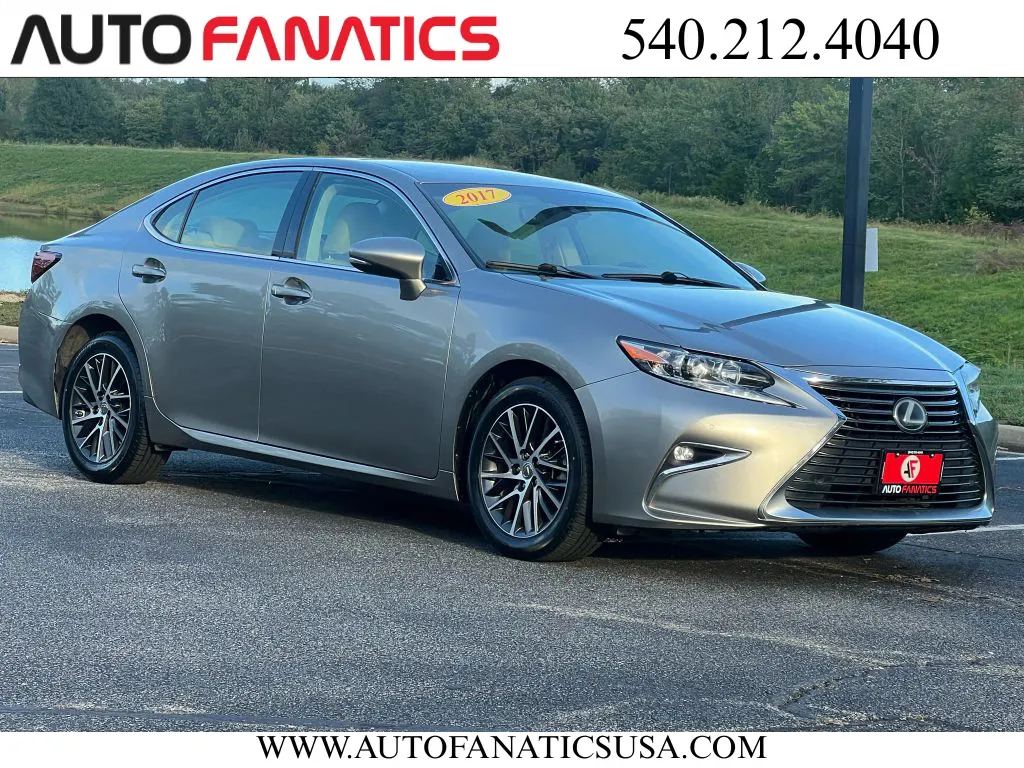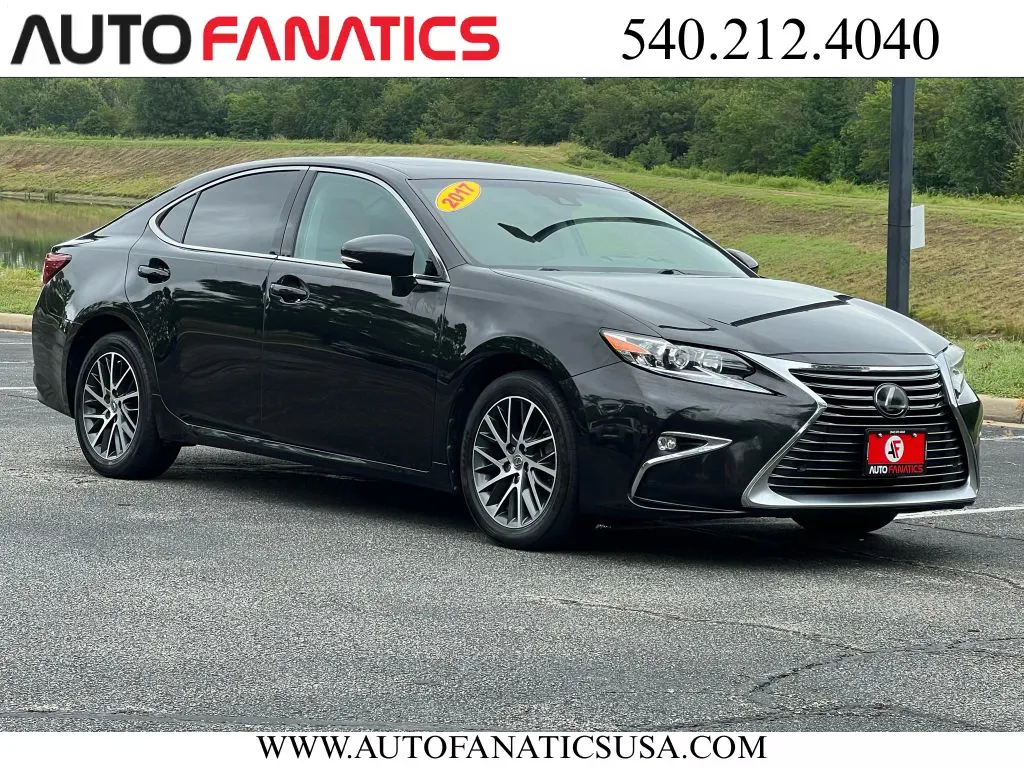How to Estimate Your Car Loan Payment
When you start thinking about a new car, it’s natural to jump right into browsing SUVs or trucks. But taking a moment to focus on your budget first can save you a lot of time and potential heartache. A low monthly payment might seem great, but how do you know if it’s actually a good deal? The answer lies in understanding the factors that shape your loan. From your credit score to the length of the loan, each piece plays a crucial role. We’re here to show you how to estimate loan payment car choices so you can identify the right financial path and find a vehicle that you’ll love for years to come, without any financial surprises.
Key Takeaways
- Your down payment and loan term are powerful tools: Making a larger down payment and choosing a shorter loan term are the most effective ways to lower your monthly payment and save significant money on interest.
- Preparation is your best advantage: Check your credit score and get pre-qualified for a loan before you start shopping. This preparation helps you secure a better interest rate and gives you a firm budget to work with.
- Look beyond the monthly payment: To understand the true cost of a car, you need to budget for more than just the loan. Always factor in recurring expenses like insurance, maintenance, and fuel to ensure the vehicle fits your financial picture.
How Do Car Loans Actually Work?
Figuring out car financing can feel like a huge hurdle, but it’s more straightforward than you might think. At its core, a car loan is a personal loan you use to purchase a vehicle. Most auto loans are "secured," which just means the car itself acts as collateral for the lender. If for some reason you can't make your payments, the lender can take the vehicle back. This security is why lenders are often willing to offer significant sums of money for car purchases, making it possible for you to drive home in a reliable car without paying the full price upfront.
When you get a loan, you’re borrowing a specific amount of money (the principal) and agreeing to pay it back over a set period (the loan term), plus interest. Several factors come together to determine your final monthly payment, including the car's price, your down payment, the value of any vehicle you trade in, and your interest rate. Getting a handle on these components is the first step to feeling confident in your purchase. You can play with these numbers using a car loan calculator to see how different variables affect your potential payment. It’s a great way to get a clear picture of what you can comfortably afford before you even start shopping our inventory.
The Building Blocks of a Car Loan
Think of a car loan as being made of a few key parts. First is the principal, which is the total amount you borrow to buy the car after your down payment and trade-in value are subtracted. Next is the loan term—the length of time you have to pay it back, usually expressed in months like 36, 48, 60, or 72. Finally, there's the interest rate, which is the percentage the lender charges you for borrowing the money. Together, these elements determine the size of your monthly payment and the total cost of your new ride over time.
What Is an Interest Rate?
Your interest rate is essentially the cost of borrowing money. It’s expressed as a percentage of the loan amount that you pay to the lender over the course of a year. For example, a lower interest rate means you'll pay less money over the life of the loan. Lenders determine your rate based on several factors, including your credit history, the loan term, and the vehicle itself. Generally, a longer loan term might come with a slightly higher interest rate because the lender is taking on more risk over a greater period. The goal is always to secure the lowest rate possible to save money.
How Your Credit Score Plays a Role
Your credit score is one of the most important factors in securing a car loan. Lenders use this three-digit number to get a quick snapshot of your financial health and how reliably you've paid back debts in the past. A higher credit score signals to lenders that you're a lower-risk borrower, which often means they'll offer you a better interest rate. Most lenders look for a score of at least 661 for a standard auto loan. If your score is on the lower side, don't worry—there are still options available, and we're here to help you explore them and get approved.
What Determines Your Monthly Payment?
Figuring out your potential monthly car payment isn't just about the sticker price. Several key factors work together to determine that final number. Understanding these components puts you in the driver's seat, allowing you to adjust different variables to find a payment that fits comfortably within your budget. Let's break down exactly what goes into that calculation.
The Car's Price and Your Down Payment
The price of the car is your starting point. A more expensive vehicle will naturally lead to a higher loan amount. This is where your down payment becomes your best friend. The more money you can put down upfront, the less you'll need to borrow. This not only reduces your monthly payment but can also help you pay off the car faster and potentially secure a better interest rate. Even a small increase in your down payment can make a noticeable difference over the life of the loan. You can explore our inventory of used cars in Fredericksburg, VA to see how different price points might fit your budget.
Your Interest Rate and Credit Score
Your interest rate is the fee a lender charges you for borrowing their money, expressed as a percentage of the loan amount. Your credit score is the single most important factor in determining what interest rate you'll be offered. A higher credit score signals to lenders that you're a reliable borrower, which usually results in a lower interest rate. A lower rate means you'll pay less in interest charges each month and over the entire loan term. Before you start shopping, it’s a great idea to get pre-qualified to see what kind of rate you can expect based on your credit history.
The Length of Your Loan
The loan term is simply how long you have to pay back the loan. Common terms are 48, 60, or 72 months. Spreading the loan out over a longer period, like 72 months, will result in a lower monthly payment, which can be tempting. However, it's important to remember that a longer term also means you'll pay more in total interest over time. A shorter term, like 48 or 60 months, will have higher monthly payments, but you'll pay off the car sooner and save money on interest. Our car loan calculator is a great tool for experimenting with different loan terms to find your sweet spot.
Fees and Taxes to Factor In
The price on the window sticker isn't the final number you'll finance. You also need to account for sales tax, title and registration fees, and any dealership documentation fees. These costs are typically rolled into your total loan amount, which will increase your monthly payment slightly. Forgetting to include them in your calculations can lead to a surprise when you're signing the final paperwork. Being aware of these additional costs from the start helps you create a more accurate and realistic budget, ensuring your final payment is exactly what you expected.
How to Use a Car Loan Calculator
A car loan calculator is one of the most powerful tools you can use when you’re figuring out your budget. It takes the guesswork out of the process and gives you a clear picture of what your monthly payments could look like. Instead of getting attached to a car that’s outside your budget, you can use a car loan calculator to shop with confidence. It helps you understand how different factors—like the down payment and loan term—affect your payment, so you can find a plan that works for you. Think of it as your financial co-pilot for this journey.
What Information You'll Need
To get the most accurate estimate, you’ll need to gather a few key pieces of information before you start plugging in numbers. The basics include the vehicle's price, the amount you plan to use for a down payment, your estimated interest rate, and the loan term (the number of months you'll be paying). If you have a car you’d like to trade in, you can also input its value. Don’t worry if you don’t have exact figures yet; you can use estimates to start. For example, you can get a good idea of your current vehicle's worth if you take a moment to value your trade online.
How to Read the Results
Once you’ve entered your information, the calculator will instantly show you an estimated monthly payment. This is the number most people focus on, but it’s not the only important detail. Look for the total interest you’ll pay over the life of the loan and the total amount you’ll repay altogether. Seeing these figures helps you understand the true cost of borrowing money. A lower monthly payment might seem appealing, but if it’s attached to a very long loan term, you could end up paying significantly more in interest over time. The calculator lays all of this out so you can see the full financial picture.
Helpful Calculator Features
Many online calculators have extra fields that allow you to get an even more precise estimate. Beyond the basics, you can often add details like estimated sales tax, title fees, and registration costs. Including these figures gives you a much more realistic idea of your final monthly payment, preventing any surprises down the road. Some calculators also let you input any remaining balance you might have on your trade-in vehicle. Taking a moment to fill in these extra details helps create a comprehensive budget that accounts for all the associated costs of buying a car, not just the sticker price.
Test Different Scenarios
One of the best things about a car loan calculator is the ability to play with the numbers. You can instantly see how small changes impact your monthly payment. What happens if you increase your down payment by $1,000? How does your payment change if you choose a 48-month loan instead of a 60-month one? By testing different scenarios, you can find a sweet spot that fits your budget. This process empowers you to make informed decisions before you even step into the dealership. Once you have a good idea of what you can afford, you can confidently get pre-qualified and start shopping.
Smart Ways to Lower Your Car Payment
Once you have a handle on how car loans work, you can start looking for ways to make your monthly payment more manageable. It’s not just about finding a car with a lower price tag; the structure of your loan plays a huge role in what you’ll pay each month and over the long run. A few strategic moves before you sign the paperwork can save you hundreds, or even thousands, of dollars.
Think of it as setting yourself up for success. By focusing on your down payment, the length of your loan, your credit score, and the interest rate, you take control of the financing process. These four areas have the biggest impact on your monthly bill. You can experiment with different numbers using a car loan calculator to see exactly how small changes can lead to big savings. Let’s walk through each strategy so you can feel confident and prepared when you’re ready to buy.
Make a Larger Down Payment
One of the most direct ways to lower your monthly car payment is to make a larger down payment. The more money you put down upfront, the less you have to borrow. A smaller loan amount means you’ll pay less in interest over time, and your monthly payments will be lower from the start. A good rule of thumb for a used car is to aim for a down payment of at least 10% of the vehicle's purchase price.
If you have a vehicle to trade in, its value can serve as a significant part of your down payment. You can easily get an estimate for your trade-in online to see how much you could apply toward your next car. The key is to contribute as much as you comfortably can without draining your emergency savings.
Choose the Right Loan Term
The loan term, or the length of time you have to repay the loan, is another major factor in your monthly payment. A longer term, like 72 or 84 months, will result in a lower monthly payment, which can seem appealing. However, you'll pay significantly more in total interest over the life of the loan. On the other hand, a shorter term, like 48 or 60 months, means higher monthly payments but less interest paid overall.
Most financial experts suggest a loan term of 60 months (five years) or less if possible. This strikes a good balance, allowing you to own your car sooner and save money on interest without making the monthly payment too high.
Work on Your Credit Score
Your credit score is a snapshot of your financial health, and lenders use it to determine how much of a risk you are as a borrower. A higher credit score generally qualifies you for a lower interest rate, which directly translates to a lower monthly payment. Even a small improvement in your score can make a noticeable difference in the total amount you pay for your car.
Before you start car shopping, it’s a great idea to check your credit report for any errors and see where you stand. Consistently paying your bills on time and keeping your credit card balances low are two of the best ways to build and maintain a strong credit score.
Shop Around for the Best Rate
You wouldn’t buy a car without comparing a few options, and the same principle applies to your auto loan. Don’t just accept the first financing offer you receive. Take the time to compare rates from different lenders, including your own bank, local credit unions, and the dealership. At Auto Fanatics, we work with multiple lenders to help you find competitive financing.
When comparing offers, look at the Annual Percentage Rate (APR), not just the interest rate. The APR includes the interest rate plus any lender fees, giving you a more accurate picture of the loan's total cost. Getting pre-qualified for a loan before you visit the dealership is a smart move that gives you a solid baseline and more negotiating power.
Beyond the Monthly Payment: Other Costs to Consider
It’s easy to get laser-focused on the monthly payment, but that number doesn’t tell the whole story. To make sure your new-to-you car fits comfortably into your life, you’ll want to look at the total cost of ownership. This means thinking beyond the loan itself and accounting for the other expenses that come with having a vehicle. Planning for these costs ahead of time is the best way to avoid financial surprises down the road and enjoy your car without any stress.
Car Insurance
Before you can even drive your car off the lot, you’ll need proof of insurance. The cost of car insurance can add a significant amount to your monthly budget, sometimes over a hundred dollars, depending on the vehicle, your driving record, and the coverage you choose. I always recommend getting a few insurance quotes for the specific cars you’re considering. This way, you can see how different models might affect your premium and factor that into your decision-making process from the very beginning.
Registration and Taxes
When you buy a car, there are a few one-time fees you’ll need to cover. These typically include sales tax, title fees, and the cost to register the vehicle in your name. Here in Virginia, you can find details about these registration fees on the DMV website. While some lenders allow you to roll these costs into your auto loan, paying them upfront means you won’t be paying interest on them for the life of the loan. It’s a small step that can save you money in the long run.
Maintenance and Repairs
Every car needs a little TLC to keep it running smoothly. This includes routine maintenance like oil changes, tire rotations, and new brakes. It’s also smart to plan for unexpected repairs. While we meticulously inspect every vehicle at Auto Fanatics, it’s wise to have a safety net. Setting aside a small amount each month in a dedicated car fund can make a surprise repair feel like a minor inconvenience instead of a major crisis. You can also look into protection plans that offer extended coverage for extra peace of mind.
The Total Cost of Ownership
So, how do you pull all of this together? A great rule of thumb is to keep your total car expenses—including your payment, gas, insurance, and maintenance—at or below 15% to 20% of your monthly take-home pay. This guideline helps ensure your car is a convenient part of your life, not a financial burden. By looking at the complete picture, you can confidently choose a vehicle that you’ll love driving and that fits perfectly within your overall financial picture.
Common Mistakes When Estimating Your Payment
When you’re excited about finding the perfect car, it’s easy to overlook a few details while estimating your loan payment. A little awareness goes a long way in avoiding common pitfalls that can cost you money down the road. Let’s walk through some of the most frequent mistakes so you can approach your car loan with confidence and clarity.
Focusing Only on the Monthly Number
It’s tempting to zero in on the monthly payment. If that number fits your budget, you’re good to go, right? Not so fast. A lower monthly payment often comes from a longer loan term. While it might feel more manageable each month, you’ll end up paying significantly more in total interest over the life of the loan. For example, a 72- or 84-month loan will have a smaller payment than a 60-month loan for the same car, but the total cost will be higher. Always use a car loan calculator to see the total interest paid on different loan terms, not just the monthly installment.
Forgetting About Extra Costs
The sticker price is just the starting point. Several other costs will be added to your final bill, and they can make a real difference in your loan amount. These often include sales tax, documentation fees for handling the paperwork, and title and registration fees for your license plates. According to Calculator.net, these fees can often be rolled into your loan, but that means you’ll be paying interest on them, too. To get a clear picture, always ask for an "out-the-door" price, which gives you a full breakdown of every cost before you commit.
Not Comparing Interest Rates
Accepting the first loan offer you receive is one of the quickest ways to overpay. Interest rates can vary widely between lenders, so it pays to shop around. When you compare offers, make sure you’re looking at the Annual Percentage Rate (APR), not just the interest rate. As NerdWallet explains, the APR gives you the true cost of the loan because it includes the interest rate plus any lender fees. Getting pre-qualified with a lender like Capital One can give you a solid baseline to compare against other offers you might receive.
Misunderstanding the Loan Term
The loan term is simply how long you have to repay the loan. Longer terms have become increasingly popular because they spread the cost out, making the monthly payment seem more affordable. In fact, the average car loan is now around 67 months long. The danger with a long-term loan, aside from paying more interest, is the risk of negative equity. This happens when you owe more on your loan than the car is actually worth, which can be a problem if you need to sell or trade in the vehicle before it’s paid off.
How to Secure the Best Loan Terms
Finding the right car is exciting, but securing a great loan is what makes it a smart financial move. Taking a few key steps before you sign on the dotted line can save you a significant amount of money over the life of your loan. Think of it as setting yourself up for success so you can drive off the lot with confidence, knowing you got a deal that truly works for you.
Prepare Your Credit Profile
Your credit score is one of the biggest factors lenders use to determine your interest rate. A higher score generally signals to lenders that you’re a lower-risk borrower, which often translates into a lower interest rate. Before you start applying for loans, it’s a great idea to check your credit report for any errors that might be dragging your score down. Disputing inaccuracies and paying down existing balances can make a real difference. Even a small improvement in your score can help you qualify for better loan terms, saving you money each month.
Compare Different Lenders
You wouldn’t buy the first car you see, so don’t take the first loan offer you receive. Rates and terms can vary widely between different types of lenders, like national banks, local credit unions, and dealership financing. It pays to see what different places can offer. Here at Auto Fanatics, we work with a network of trusted lenders to find competitive options for our customers. You can even get pre-qualified with Capital One right through our site to see where you stand without impacting your credit score.
Know the Difference: APR vs. Interest Rate
When you’re looking at loan offers, you’ll see two key terms: interest rate and Annual Percentage Rate (APR). The interest rate is simply the cost of borrowing the money. The APR, however, is the more important number to compare. It includes the interest rate plus any lender fees or other charges rolled into the loan. Because it represents the total cost of borrowing, the APR gives you a more complete picture and allows for a true apples-to-apples comparison between loan offers.
Why You Should Get Pre-Approved
Walking into a dealership with a pre-approved loan offer is a game-changer. It shows you’re a serious buyer and, more importantly, it gives you a firm budget to work with. When you get approved for financing ahead of time, you can focus on finding the perfect vehicle without worrying about whether you’ll qualify for a loan. This puts you in a stronger position and streamlines the entire car-buying process, making it faster and less stressful. It’s a simple step that gives you more control from the very beginning.
Ready to Apply? Follow These Steps
Feeling ready to take the next step toward your new car is exciting. The financing part can feel a little intimidating, but breaking it down into a few simple actions makes it much more manageable. Think of it as your roadmap to getting the keys in your hand. By following these steps, you’ll walk into the dealership feeling confident and prepared, knowing exactly where you stand and what you can afford. It’s all about putting you in the driver’s seat of the financial process, not just the car.
Check Your Credit Report
Before you start looking at cars or loan applications, take a moment to check your credit report. This is your financial starting line. Your credit score is a key factor that lenders use to determine the interest rate they’ll offer you, and a higher score can mean a lower monthly payment. Knowing your score ahead of time removes any surprises and gives you a clear picture of what to expect. You can get a free copy of your report from the major credit bureaus. This simple step empowers you with the knowledge you need to have a productive conversation about financing.
Get Pre-Qualified
Getting pre-qualified is one of the smartest moves you can make. It’s like getting a sneak peek at what you can borrow without it affecting your credit score. This process gives you a solid budget to work with, so you can focus your search on trucks or SUVs that comfortably fit your finances. It saves you time and prevents the disappointment of falling for a car that’s out of reach. We make it easy to get pre-qualified with Capital One right on our website, so you can start shopping with confidence and a clear price range in mind.
Shop for the Best Rates
Once you’re pre-qualified, it’s time to look at your loan options. Don’t just look at the interest rate; pay attention to the Annual Percentage Rate (APR). The APR includes the interest rate plus any lender fees, giving you the true cost of the loan. Comparing APRs from different lenders helps you find the most affordable option. At Auto Fanatics, we work with a network of trusted lenders to help you find competitive rates without the hassle of applying at a dozen different places. Our goal is to make the financing process as transparent and straightforward as the rest of your car-buying experience.
Finalize Your Loan
You’ve checked your credit, found the perfect car in your budget, and compared your options. Now, it’s time to finalize the loan. This is where everything comes together. You’ll complete a full credit application, and once it’s approved, you’ll sign the final paperwork. Our team is here to walk you through every document and answer any questions you have. You can even start the process from home and get approved online to save time at the dealership. We’ll handle the details so you can focus on the excitement of driving your new car home.
Related Articles
- Car Loan Application: 7 Steps to Get Approved
- A Smart Shopper's Guide to Auto Loan Rates
- How to Apply for an Auto Loan in 7 Simple Steps
- Car Loans Calculator: The Ultimate User's Guide
Frequently Asked Questions
How much should I actually put down for a down payment? While there's no magic number, a good goal for a used car is to put down at least 10% of the purchase price. A larger down payment is one of the best tools you have because it reduces the amount you need to borrow. This not only lowers your monthly payment but also helps you pay less in total interest over the life of the loan. If you have a vehicle to trade in, its value can make up a big chunk of your down payment.
Can I still get a loan if my credit score is low? Yes, you absolutely can. While a higher credit score typically helps you secure a lower interest rate, there are still financing options available for those with less-than-perfect credit. We work with a network of different lenders who specialize in various credit situations. The best first step is to talk with our finance team so we can understand your specific circumstances and help you find a solution that works.
Is a longer loan term a bad idea if it makes the payment lower? A longer loan term can be tempting because it spreads the cost out and results in a lower monthly bill. However, it's a trade-off. The longer you take to pay off the loan, the more you will pay in total interest. Most financial experts recommend a term of 60 months or less if it fits your budget. This helps you own the car sooner and saves you money in the long run.
What's the real difference between an interest rate and an APR? Think of the interest rate as the base cost of borrowing the money. The Annual Percentage Rate, or APR, is the more important number to focus on because it gives you the total cost. The APR includes the interest rate plus any lender fees or other charges associated with the loan. When you're comparing offers from different lenders, always use the APR to get a true apples-to-apples comparison.
Why should I get pre-qualified before I even start looking at cars? Getting pre-qualified is like creating a roadmap for your car search. It gives you a clear and realistic budget to work with, so you can focus on vehicles you know you can comfortably afford. It also shows that you're a serious buyer and puts you in a stronger position when you're ready to make a deal. It’s a simple, no-commitment step that saves you time and makes the entire process smoother.










